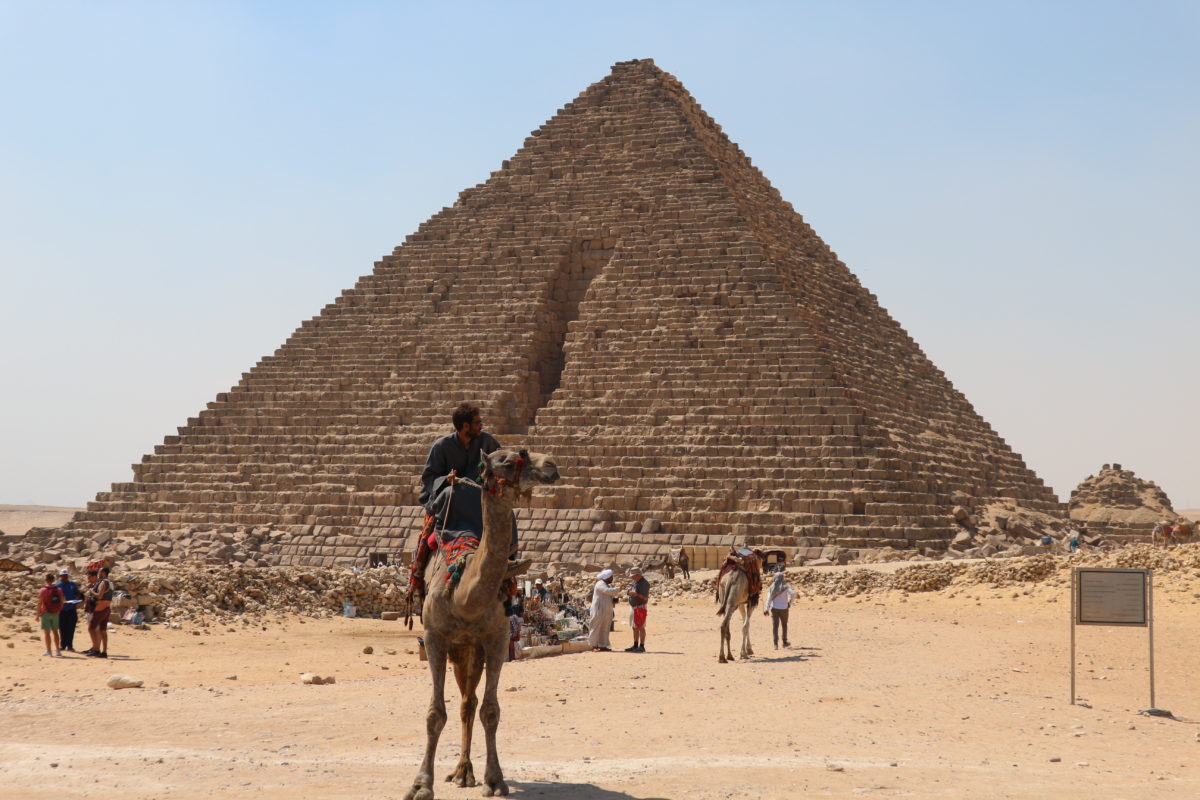
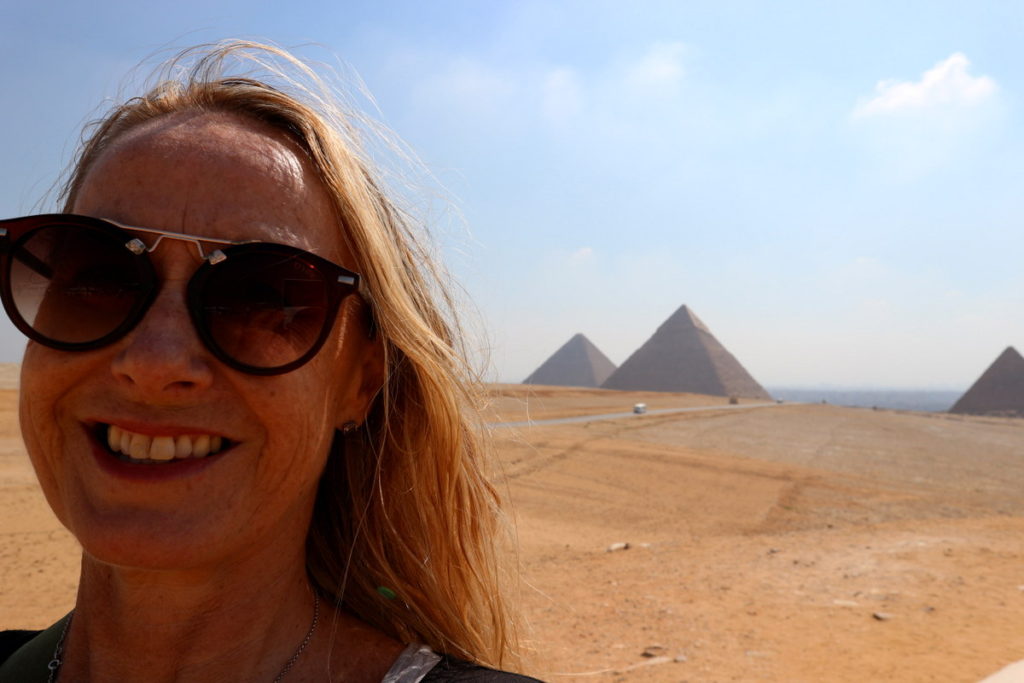
Cemeteries’ are generally built on the outskirts of towns but close enough for easy visitation and The Egyptian Pyramids followed the same principle. It’s only a 20-30 minute ride to this ancient-world site which sits on a rise below which the modern day city of Cairo sprawls in every direction.
The top of the Great Pyramid of Giza, the most well known of the Egyptian Pyramids and the only surviving of the Seven Wonders of the Ancient World can be seen as you take the turnoff leading towards it from the highway. You’ll pass on your right a massive new museum complex that is currently under construction. To be called the Grand Egyptian Museum it is due to be completed by the end of 2018.
And then, there you are parking up in front of this amazing, ancient structure with humans, dwarfed into ants at its base. This building is not just about the size, which is impressive enough on its own. But these gems are awe-inspiring for their; feat of engineering, the vastness of years that have passed since they were built and the shape that when you stand at their base and peer up, seems to serrate the sky with each piece of its layering.
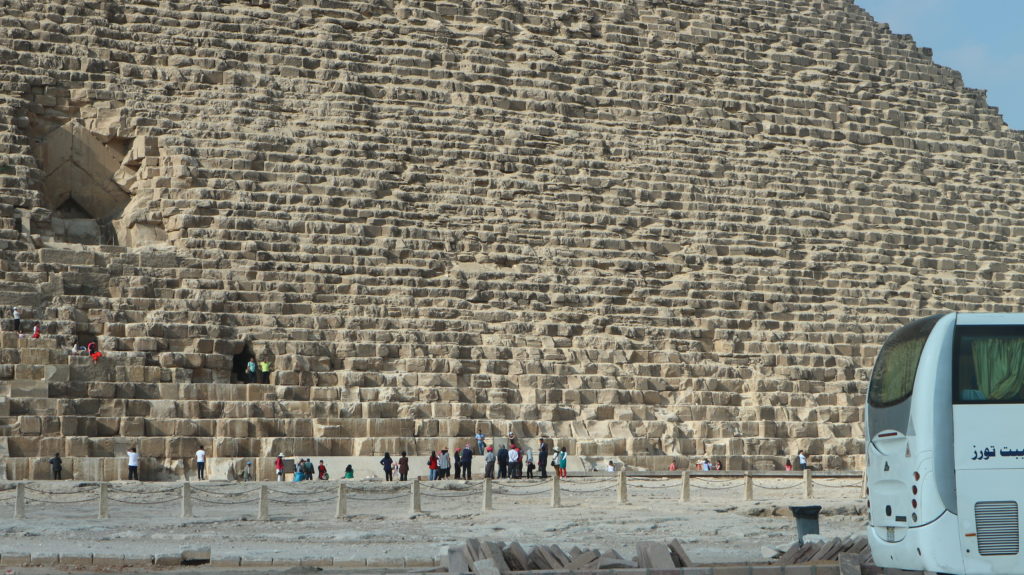
Freighting and Logistics
Simply getting each block of stone, all weighing tons (the heaviest around 80 tons) transported and foisted so precisely into position is a freighting and logistical marvel. The sandstone brought from quarries in the Nile Valley and floated along the Nile River has weathered the 4500 years well. The outer layer of white limestone has not, however, survived instead falling victim to both erosion and removal by humans. The middle-sized of the three pyramids is the only one that still has some of the outer covering remaining. It’s at the very top of the pyramid which is called the pyramidion. And the very tip is called the Benben.
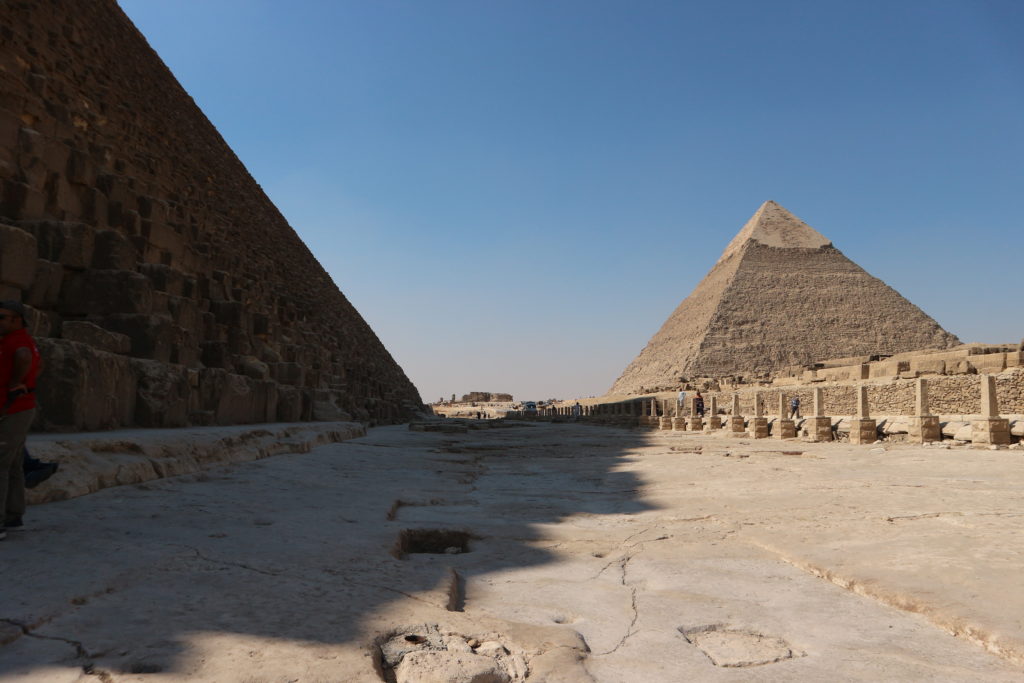
Quite noticeable are the two holes on the front face of the largest of the pyramids which are entrances to the inner tombs where plans were made to lay the Kings body. The first entrance leads to what was incorrectly called but remains the name of, the Queens Chamber. This was the original location for the King’s burial chamber but the engineers decided it was not safe and instead built another chamber higher and off to the left of the central position of the Queen’s chamber. The Queen’s chamber now takes all the weight.
Which Kings?
There are three pyramids at the main tourist complex which were all built by different kings; the largest, Pharaoh Khufu, middle-sized, Pharaoh Khafre and the smallest, Pharaoh Menkaure around 2550 B.C. and 2490 B.C. but there are many more in the distance around Cairo. There’s a plateau which is great for getting a panoramic view of all three and if you look very carefully you can see other temples way off into the distance. This is also a cheaper place to ride a camel if you’re interested.
The Sphinx
From there we headed back past the pyramids and on towards the Sphinx who was built to guard the biggest pyramid. There is a temple next to the Sphinx which is made out of granite and fairly impressive for this aspect alone. I loved the feel of the Sphinx, its line, shape, and size so pleasing to my eye, with his tail all wrapped up beside him. There’s been quite a bit of restorative work done on his legs and paws. And his nose? What about his nose? Well, there are many versions of answers to the question of where it absconded to.
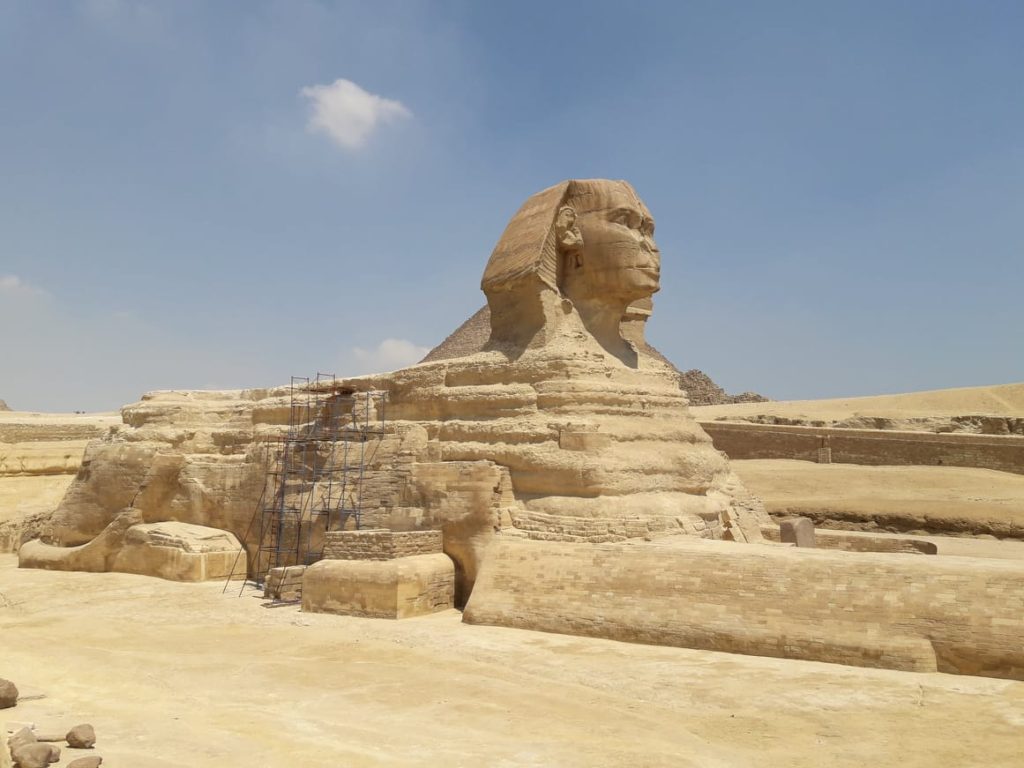
At any tourist site, there are locals trying to earn a living off the tourist dollar. At the Pyramids, the offering’s are; to show you the best place for photos, to ride a camel or to buy some of the very Egyptian-type souvenirs that tend to be made in China or India and are generally not the real thing such as in the case of the papyrus paper. If you don’t mind fake and/or mass produced, feel free to bargain and bargain fairly hard.
There’s a light show every night here at the Sphinx but our guide said it was very corny with the pyramids talking to you about their history.


Leave a Reply